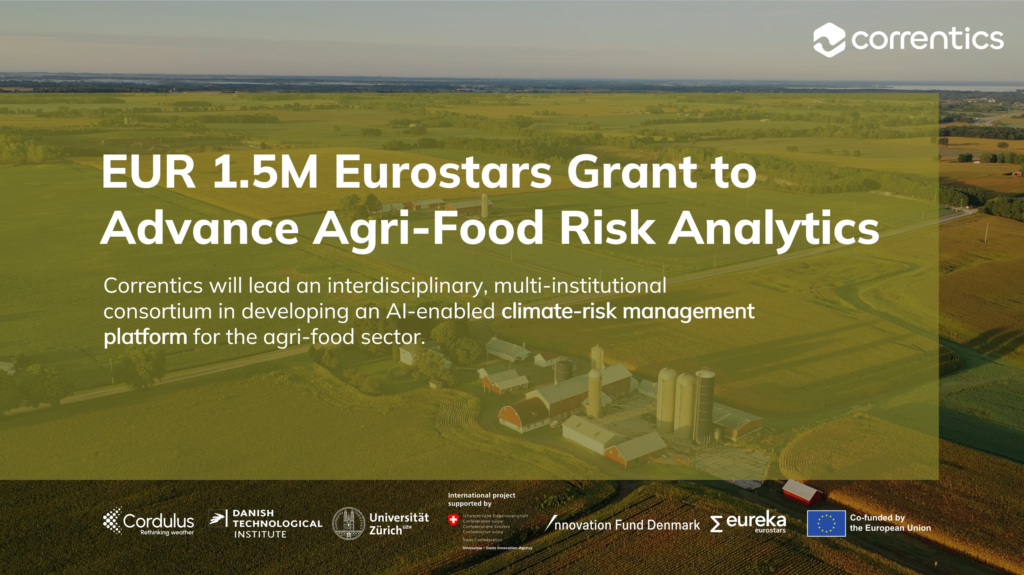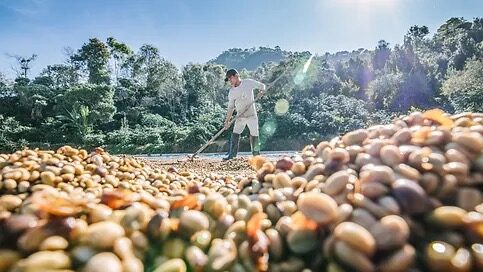- Category: Projects
- Industry: climate risk, food insecurity, food security, global food solutions, security of supplies, sustainable agriculture
Effective Solutions for Global Food Security
In 2023, over two billion people were exposed to some level of food insecurity and lack access to nutritious and sufficient food, according to a report of the Food and Agriculture Organization (FAO). Irregular access to safe and healthy food is a vital issue for governments and international institutions alike and food security is one of the primary challenges that the international community set out to address in the UN Sustainable Development Goals (SDGs).
SDG goal number 2, “Zero Hunger”, sets out to create a world free of hunger by 2030, which directly relates to improving food security. Its targets include ending all forms of malnutrition, increasing agricultural productivity, and ensuring sustainable food production systems.
Ensuring food security for all has long been a priority on the agendas of intergovernmental institutions and non-governmental organizations such as the World Bank. Food security involves three main dimensions which need to be stable over time: physical availability of food, economic and physical access to food, and food utilization. Additionally, several challenges limit efforts towards food security, such as climate change and environmental shocks, demographic developments, conflicts and violence, economic shocks, or inadequate infrastructure, among others.
This article provides a definition of food insecurity and explores key challenges in the context of climate change while also providing statistics related to the topic. It explores the various causes of food insecurity, before discussing various technological and political solutions. Building upon various case studies, we will present state-of-the-art climate risk analytics as a robust tool to support efforts towards more climate-resilient food systems.
What is Food Insecurity?
The definition of food insecurity, as provided by the UN Food and Agriculture Organization (FAO), is the lack of access to enough safe and nutritious food for normal growth and development and an active and healthy life. Food insecurity translates into the persistent concern about access to sufficient and affordable food at all times.
In more detail, food insecurity involves several aspects: access to food in general, the nutritive value of different types of food, health and development, and the reliability of access to food. Food insecurity can either be moderate or acute, with the distinction being in the level of urgency that it creates for people. Acute food insecurity threatens the lives or livelihoods of people. Closely related to the notion of food insecurity is hunger, which concerns the distress associated with a chronic lack of sufficient and nutritious food, interconnected with issues of poverty, inequality, conflict, weak government systems, and climate change.
Globally in 2023, the FAO estimates that more than 2.33 billion people were moderately or acutely exposed to food insecurity. The organization also finds that the Demographic Republic of the Congo is the country with the largest number of people facing acute food insecurity, with more than 25 million people impacted in 2023. The country faces widespread poverty, conflict, and displacement, as well as low agricultural production, which are severe challenges to food security. In 2024, more than 300 million people currently face acute levels of food insecurity.

As hinted by the situation in the Democratic Republic of the Congo, the region with the highest percentage of the population being affected by food insecurity is Africa, where more than 50% of the total population was exposed to moderate or severe food insecurity during 2023, double the global average. According to the FAO, other regions that suffer from a lack of access to healthy and safe food include Latin America and the Caribbean (28%), South and South-East Asia (25%), and Oceania (27%). These regions often lack sufficient and comprehensive solutions to address food insecurity, such as technological innovations in agriculture, financing systems, policy measures in support programs or international aid, or community-driven approaches.
Causes of Food Insecurity
Although levels of food security have generally been increasing since the end of the 20th century and the start of the 21st century, levels of food security across the world are volatile and vary from year to year, notably because of climate-related and geopolitical events. The causes of food insecurity are numerous and can be summarized under three broad categories: weather extremes, conflict and insecurity, and economic shocks.
Climate and weather extremes can restrict communities’ access to sufficient and affordable food, for example when heavy precipitation, floodings, or droughts disrupt agricultural productivity, damage food stocks, or when they lead to food supply chain disruptions. A recent study in the journal Climate Risk Management shows that “future climate change is projected to exacerbate the magnitude and likelihood of adverse consequences to food security and nutrition”. Climate change can severely impact the number of people at risk of food insecurity, as it can lead to agricultural productivity declines, reduced incomes, food safety issues, and changes in crop yields and quality.
Apart from hunger and malnutrition, conflicts and instability are also considerably impacted by climate change and contribute to food insecurity. There is a vicious feedback loop between conflict and food insecurity: food insecurity drives conflict and conflict drives food insecurity. In the first case, food insecurity driven by climate extremes can lead to an increase in civil conflict. For example, a Kyung Hee University study in South Korea found that high temperatures during corn growing seasons in sub-Saharan Africa reduced yields and led to a rise in civil conflict. Moreover, the severe drought that hit the Fertile Crescent between 2006 and 2010 played a direct role in the escalation of conflict that led to the Syrian civil war that started in March 2011. Inversely, armed conflict, war, and civil unrest often leads to disruptions in food production, distribution and access.
Finally, economic shocks can significantly threaten food security, particularly in poorer or underdeveloped countries. These shocks, such as those triggered by the COVID-19 pandemic, can disrupt food production and distribution, while also driving up food prices. In 2024, for example, inflation within the global financial system has caused strong increases in the prices of domestic food baskets. These economic challenges, compounded by socioeconomic disparities and the increasing impacts of climate change, are key drivers of food insecurity worldwide.
Effective Food Security Solutions
Because the origins of food insecurity are often manyfold, complex, and region-specific, there is no one-size-fits-all food insecurity solution. However, there are several technological, financial, and political solutions developed around the world. Advanced forecasting and analytics solutions have the potential to provide more precise yield predictions and extreme weather alerts based on weather and climate modelling, seasonal forecasting, remote-sensing data, and historical yield data. The Correntics climate analytics platform is a good example of a tool that can help businesses in the agricultural and food sectors to conduct crop and asset-specific risk analysis, and dynamic modeling of supply chain shocks. Correntics is currently working together with Danish weather technology company Cordulus, the Danish Technological Institute, and the EClim Group at the University of Zurich to provide a solution in next-generation risk analytics capabilities for the agri-food sector, which will empower organizations to increase preparedness and resilience in the face of climate change and to reduce the risk of food insecurity.
Other technological and digital advancements include automated, precise agriculture methods to treat fields, smart irrigation systems, vertical farming systems, but also non-agricultural solutions such as upcycling food waste, developing plant-based and cellular protein, and digitizing supply chains. For instance, the Swiss Federal Office for Agriculture established Agroscope, a research institute that develops innovative smart farming solutions and sustainable agricultural practices. The institute actively disseminates research findings and technology expertise to contribute to enhancing food security.
Global Food Solutions
Governments and international organizations such as multilateral development banks or development finance institutions have long been dedicated to finding global food solutions. The World Food Programme (WFP) plays a crucial role in advancing these goals by providing food assistance, supporting sustainable agriculture, and addressing the root causes of hunger globally. Other key players such as the World Bank, the UN FAO, or the International Fund for Agricultural Development, contribute to providing global food solutions, such as fast-tracking financing for severely food insecure regions, boosting productivity, or improving nutrition, strengthening food systems, or developing early-warning systems like the FEWS NET acute food insecurity early-warning system. There is a clear global commitment to addressing food insecurity through various relief programs, industry development schemes, or resilience-building strategies.
However, there remain several challenges in the road towards improved food security across the world. For instance, the availability, accessibility and adequacy of financing flows data is poor, making it difficult to accurately assess the status of financing efforts towards global food solutions. The World Food Security Outlook estimates that the cost to provide a basic social safety net that covers 25% of daily caloric needs for the acutely food insecure from now until 2030 will be around $90 billion.
Going Forward: Key Insights and Challenges
Food insecurity is an urgent and vital issue, which affects billions of people worldwide. Access to sufficient, safe, and nutritious food can be limited by extreme weather events and the effects of climate change, by regional conflict and unrest, and by economic shocks. In light of these challenges, technological solutions, effective policies, and international collaboration need to be further accelerated to address the increasing climate and societal risks that amplify food insecurity. From advanced climate analytics to vertical farming, people, communities and institutions around the world are working for greater food security. There remain important challenges though, including poor data in agricultural and food management processes, poor transparency in financing flows for global food solutions, population growth and urbanization, or the surge of conflicts around the world.
Correntics is at the forefront of climate analytics, providing state-of-the-art tools and insights to help predict and mitigate the physical impacts of climate change on food systems. By leveraging advanced data analytics, Correntics supports informed decision-making for more resilient agricultural practices. Reach out to discuss how we can work together to increase food security in an ever-evolving climate!

Further Reading
- UNSDG 2 – “Zero Hunger”
- World Food Programme – Ending Hunger
- FAO Report – The State of Food Security and Nutrition in the World 2024
- Climate Risk Management Journal –Severe climate change risks to food security and nutrition
Related notes
- Industry: Agri-Food


